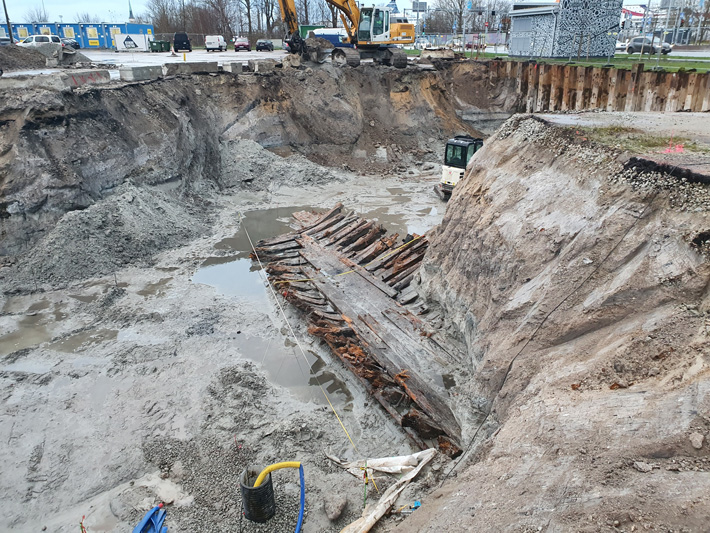Repurposed Shipwreck Unearthed in Estonia
Wrecks of ships found near the shoreline in Tallinn are keeping archaeologists busy and show that ship materials have been reused for centuries.
ERR News reports that part of a ship’s hull has been unearthed in Tallinn, Estonia, which is located on the coast of the Baltic Sea.
Priit Lätti of the Estonian Maritime Museum said that timber, sails, ropes, and metal from old ships would have been repurposed, a practice that dates back to the medieval period.

When a ship had reached the end of its lifespan, everything still usable was sawn off and reused – timber, sails, ropes and metal.
Hulks that were beached on purpose have been discovered in Tallinn.
“In a situation where both ships and dock structures were made of wood, the fire was among the chief concerns. We know that ships that caught fire were towed out of the harbour to keep the fire from spreading and allowed to drift onto the beach,” Lätti said.
A month ago, construction workers found a part of a hull on Kiikri street near Kadriorg from which all usable timber had been sawn off just above the waterline.
Ship construction was skilled work and the materials valuable. The hulk continued to be of use after being decommissioned – archaeologists have also found details used in shipbuilding in Tallinn’s Town Hall Square (Raekoja plats).
“We have found rivets that we believe were used in shipbuilding. It does not mean the sea used to reach up there, simply that details from ships were later reused,” Lätti used.
Tallinn became a military port when the land became part of the Russian Empire in the early 18th century.





